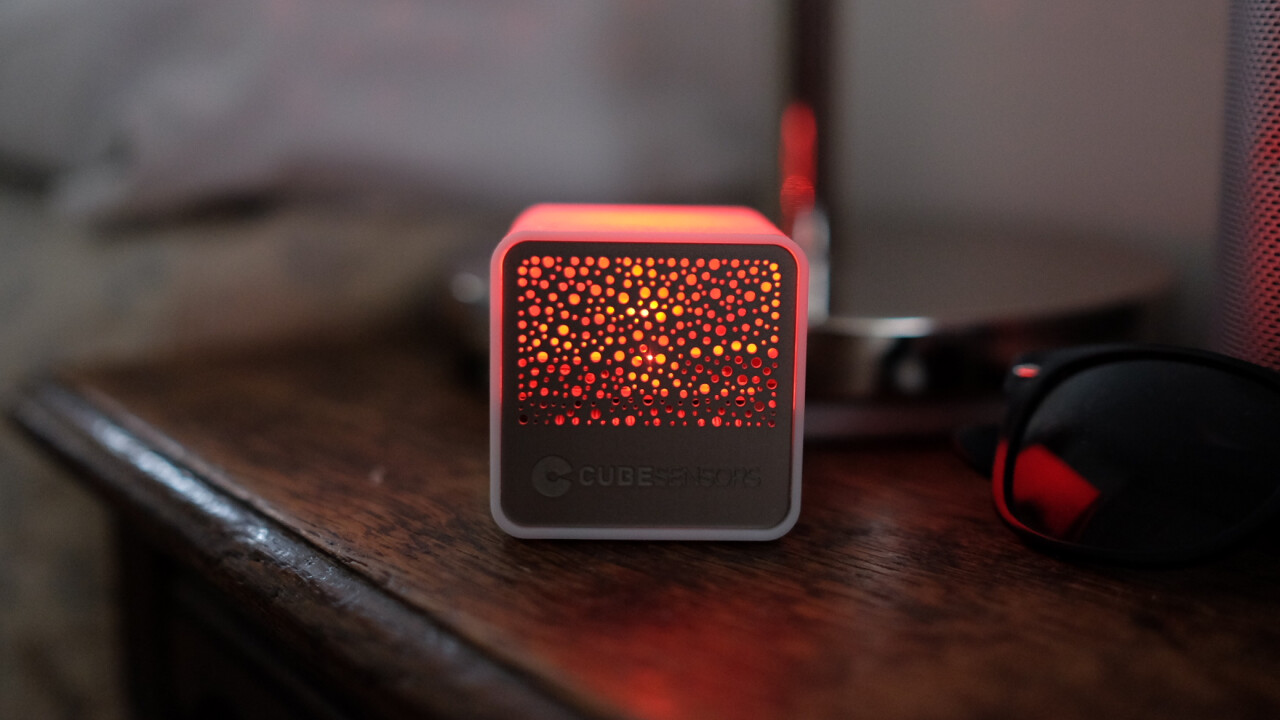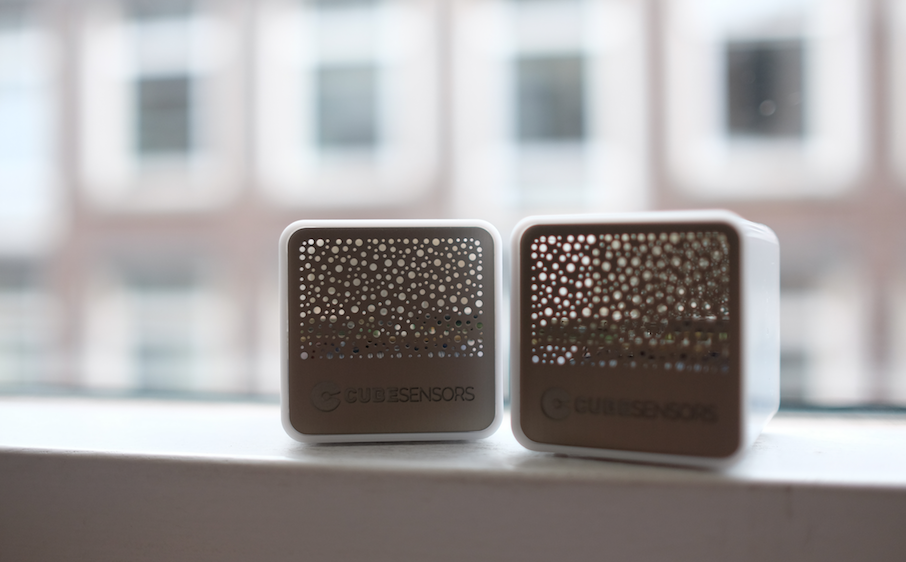
You’ve probably heard all about the Internet of Things and how it’s going to change your life, but many people haven’t experienced any smart devices for their home yet.
CubeSensors is an interesting way to get your toes wet with the Internet of Things. The company offers tiny standalone sensors that you can distribute throughout your home to get insight into the health of various metrics like the air quality and light levels.

The sensors are small rechargeable cubes — unsurprisingly — that you distribute in each room of your house. The starter pack comes with two sensors, but you can get up to six for larger homes.
A base station is connected directly to your router via ethernet, which your cubes connect to, rather than using your existing WiFi connection. Setting up the cubes themselves takes a few minutes using a laptop to activate and name which cube belongs to each room.
Once set up, you can visit CubeSensors’ website to get the status of your home from anywhere. There’s no mobile app, which is a bit disappointing, but the site’s dashboard presents data in an easy to read way that works on your phone too.
On the main screen, you get a quick, cute overview of which sensors are ‘happy’ and which aren’t quite so good. When you open each individual sensor, a quick overview shows which metrics are within acceptable levels and which need attention.

CubeSensors don’t really do much, other than collect data about your environment, but they’re a good first step into giving your house some smarts. Sensors include an audio meter, temperature, humidity, light, air pressure and quality.
You can shake (or tap) each cube to quickly get its status and it’ll light up red if something is wrong, or white if everything’s OK.
In the first week I had them, I found myself continually looking at the data out of sheer curiosity but it quickly wore off. Seeing the precise time that the sun entered my bedroom window was cool, though not exactly actionable information.
 What I did find out, however, was that I really needed to make sure that all the windows are open in my apartment when using the shower to keep air quality within safe levels.
What I did find out, however, was that I really needed to make sure that all the windows are open in my apartment when using the shower to keep air quality within safe levels.
The company sells the devices as a way to monitor your home to help find the right temperature for your thermostat or avoid getting sick, but the lack of a way to do something about it makes it a difficult sell.
Sure, it’s nice to know my house is 30 degrees and humid, but there’s not much I can do about it other than open a window.
Cubes don’t need to be charged as often as I expected, around once every thirty days. Unfortunately, unless you’re checking the dashboard frequently you’ll often find it’s been out of juice for a day or two before you notice.
With a lack of native iOS or Android apps, or ability to action information using services like IFTTT or Zapier, CubeSensors are nice to have but quickly grow uninteresting unless you’re a data nerd that obsessively checks the Web app.
The sell gets harder as more basic devices come online. This year alone I’ve gotten a Tado thermostat, Sense sleep tracker and Canary home security system which can all keep track of the temperature and air quality without the need for extra devices.
Still, if you’re curious about the status of your home while you’re away — how hot it gets during the day or if your dog is making a ton of noise, CubeSensors are a cool way to get insight into a home that otherwise wouldn’t be online with little modification.

The two pack starts at a fairly steep €235, including the base station and goes up to €455 for six.
If you’ve got money burning a hole in your pocket it’s nice hardware, but then again, you could just buy a Nest.
Get the TNW newsletter
Get the most important tech news in your inbox each week.




